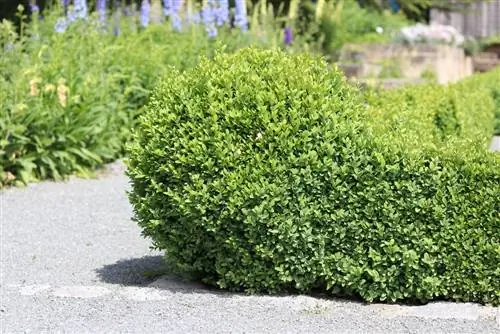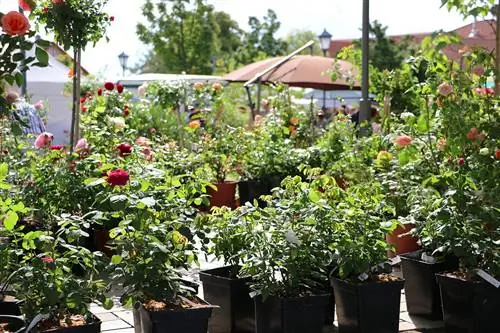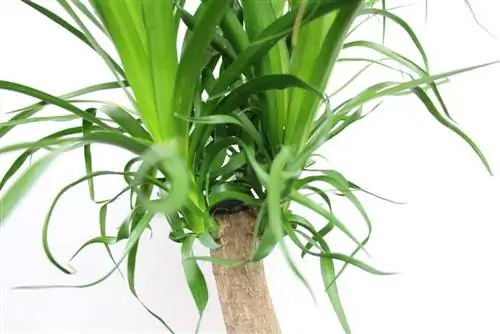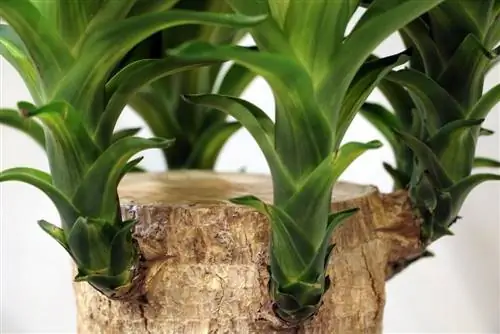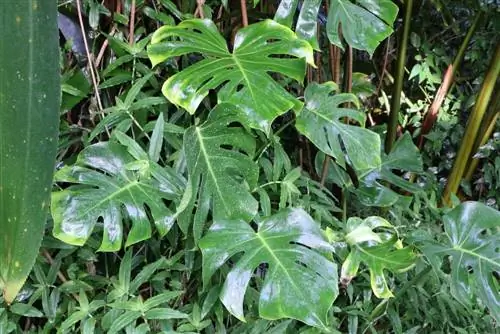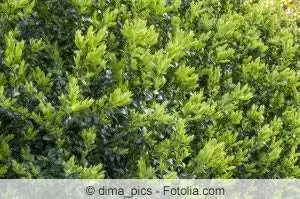- Author admin [email protected].
- Public 2023-12-17 03:39.
- Last modified 2025-01-24 12:45.
You can save a lot of money by growing your own boxwood from cuttings. The very slow-growing evergreen shrub is quite expensive in stores. If you have enough patience, simply grow the cuttings in a glass or small bottle with water before placing them in the desired location. Over time, a long hedge can be created without incurring any costs.
Gain cuttings
Ideally, the cuttings are not cut but torn. This results in a larger area for rooting. The desired shoots should all be half lignified; a young shoot is not suitable for propagation. This quickly begins to rot in the water. How large the cuttings should be is entirely up to the hobby gardener's discretion. Both small, thin and longer, thicker cuttings can be rooted well in water. The cuttings are obtained as follows:
- Base can be as thick as a pencil
- usually about ten centimeters long
- Short shoot tips by a third
- use sharp and clean secateurs for this
- remove all leaves from the lower third
- otherwise these will rot in the water
Tip:
If the cuttings were cut straight, which is more recommended for the mother bush, then they can also be cut diagonally in the lower part. This also creates a larger wound area from which the roots grow faster.
Time
The right time to take cuttings for cultivation in water is mid to late summer. Then the new shoots are so woody that they are less susceptible to diseases. But half-woody shoots can also be used to take cuttings at any other time. Because they are grown in water, there is no need to pay attention to one season. Because the glass can be taken to any location.
Tip:
Growing in water is hardly any work. Only daily ventilation is absolutely necessary, but does not take more than five to ten minutes, depending on how many cuttings are taken.
Prepare water
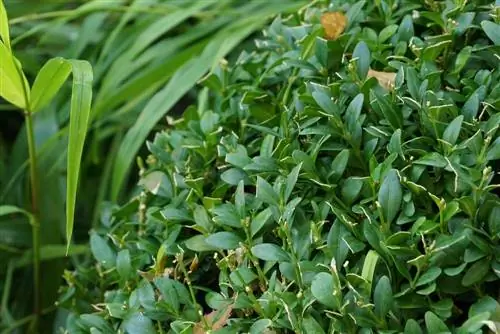
The water for rooting should be prepared well. Because if the cuttings are simply placed in tap water, rooting will not occur in many cases. Rooting powder is commercially available. There are now also water-soluble powders or tablets available. When dosing, you should pay attention to the manufacturer's instructions. There are also precautionary measures that should be strictly observed here:
- always keep away from children
- do not keep indoors
- Ideally in the shed on the top shelf
- Do not mix with water indoors but only outdoors
- do not inhale the powder
- It is ideal to wear a mask at work
- work only with gloves
- Wash your hands well after work
- do not come into contact with eyes
Tip:
Although the work goes quickly when the water for the cuttings is mixed with rooting powder, it is not entirely safe to work with this due to its composition.
Make willow water
Willow water is said to act like rooting powder and can therefore also be used as an alternative for propagation through cuttings. The use of willow water is recommended, especially if propagation is to take place without chemical ingredients. However, this requires a little more time to produce than is the case with water with rooting powder. When preparing willow water, proceed as follows:
- use finger-thick willow branches
- the trees are often located along rivers or lakes
- also in city parks with a pond
- shredding the branches heavily
- about one to two centimeters
- put in a bucket of water
- Let it steep for 24 hours
After 24 hours, strain the water and use it to grow the cuttings.
Tip:
If you often propagate various plants from cuttings or simply to do something good for your plants, you can cultivate a willow in your garden for the purpose of obtaining willow water. This is also a very decorative tree.
Water cultivation
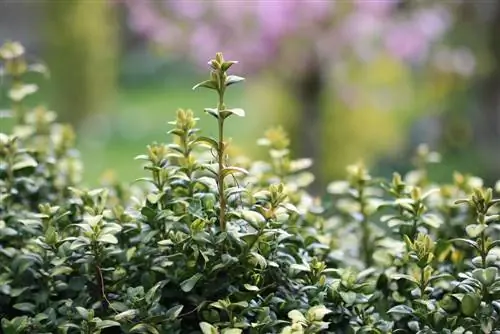
After cutting and preparing the cuttings, they are placed in a jar or small bottle with the prepared water. Regardless of whether it has been enriched with rooting powder or consists of willow water, it should always be collected rainwater. Because tap water is too hard for the fresh cuttings. The right location for cultivation and rooting is bright and warm. It is also ideal if a transparent film or bag is pulled over the glass. A PET bottle with the neck cut off can also be placed upside down over the glass. Then proceed as follows with the cuttings:
- don't leave it outside over the winter
- a winter garden is ideal
- can also be placed on a bright windowsill
- Caution is advised when heating under the window
- then the air becomes too dry
- the water in the glass could heat up
- remove foil, bag or PET bottle daily
- If there is no ventilation, fungi can form on the cutting
- if the water becomes cloudy, replace it
- use prepared water again
If the cuttings were cut in late summer, the first roots usually appear in spring. These are clearly visible if the cuttings are in a transparent glass or bottle. The first leaf shoots will now appear.
Tip:
It is easiest if you can use an indoor greenhouse in which the jars with the cuttings can simply be placed. The air can circulate here and can easily be ventilated in between.
After rooting
If the boxwood cuttings have rooted well over the winter, they can be moved to their final location. This can be a solitary spot in the meadow, but also in a newly created hedge. The cuttings can also be used to fill holes in an existing hedge. However, it must always be remembered that box trees grow very slowly and the desired height is usually only reached after about ten years. When planting, proceed as follows:
- Prepare soil
- Create drainage in the planting hole
- insert new plants
- best time for this after the last frost in May
If there are small children or free-roaming pets in the household, then the young, small plants should be protected from being stepped on. To do this, build a fence, for example made of wire mesh, around the new hedge or a single box tree. Only when the plants have become larger and stronger should this protection be removed.
Tip:
If you don't want to put them directly in their final location due to the slow growth of the plants, you can also cultivate the young plants in a bucket for the first few years. Then the plant can form additional roots, grow well, develop and grow larger before it is allowed to move into the garden.

